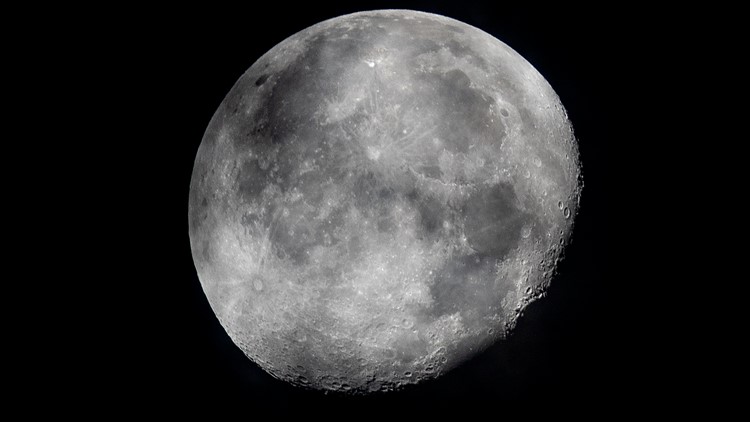Three scientific investigation payload suites looking to teach us more back here on Earth about our "nearest neighbor" have officially been selected by NASA.
The agency says the decision was a part of its future plans for multiple commercial deliveries to the Moon's surface annually.
All three investigations will get a ride to the lunar surface through the Artemis program's Commercial Lunar Payload Services initiative.
“These selections add to our robust pipeline of science payloads and investigations to be delivered to the Moon through CLPS,” said Joel Kearns, deputy associate administrator for exploration in NASA’s Science Mission Directorate. “With each new PRISM selection, we will build on our capabilities to enable bigger and better science and prove technology which will help pave the way for returning astronauts to the Moon through Artemis.”
Two of the payloads will also mark a first for NASA by landing on the far side of the Moon.
Here is a breakdown of the selected scientific investigations:
Lunar Vertex
The first is a joint lander and rover payload suite that NASA says will be delivered to one of the most "distinctive and enigmatic natural features on the Moon" -- Reiner Gamma.
Under this investigation, the rover will make detailed surface measurements of the Moon's magnetic field to help scientists understand lunar swirls.
Farside Seismic Suite (FSS)
Delivered to the Schrödinger basin will be two seismometers for the return of the first seismic data from the far side of the Moon for NASA.
"This new data could help scientists better understand tectonic activity on the far side of the Moon, reveal how often the lunar far side is impacted by small meteorites, and provide new constraints on the internal structure of the Moon," the agency wrote.
The FSS is set to stay on the lunar surface to collect data for several months and will be self-sufficient to help it survive.
Lunar Interior Temperature and Materials Suite (LITMS)
This is the second payload headed for the Schrödinger basin that will include both the Lunar Instrumentation for Thermal Exploration with Rapidity pneumatic drill and the Lunar Magnetotelluric Sounder.
According to NASA, the suite will investigate the "heat flow and electrical conductivity of the lunar interior" in the area. It will also contribute to creating a complete picture for the agency of the deep-subsurface of the Moon's far side.
“When scientists analyze these new data alongside lunar samples returned from Apollo and data from our many orbital missions, they will advance our knowledge of the lunar surface and interior, and increase our understanding of crucial phenomenon such as space weathering to inform future crewed missions to the Moon and beyond," said Lori Glaze, director of NASA's Planetary Science Division.
To date, NASA has issued six task order awards for CLPS providers that would establish lunar deliveries as early as late 2021 and reaching as far as 2028.
What other people are reading right now:
- Deputies: Body found near Skyway Bridge identified as missing Hillsborough County woman
- Inmate accused of murdering baby scales wall to escape Pinellas County Jail, planned to 'Uber to Panama'
- Judge considers Florida's request to set aside CDC rules while cruise case drifts forward
- Lightning will face New York Islanders in Stanley Cup Semifinals
- Tampa teen believes cryptocurrency is the future of finance
- Coughing at a Pinellas County beach? Red tide could be why
- Man identified 27 years after body found in Florida woods
►Breaking news and weather alerts: Get the free 10 Tampa Bay app
►Stay In the Know! Sign up now for the Brightside Blend Newsletter



